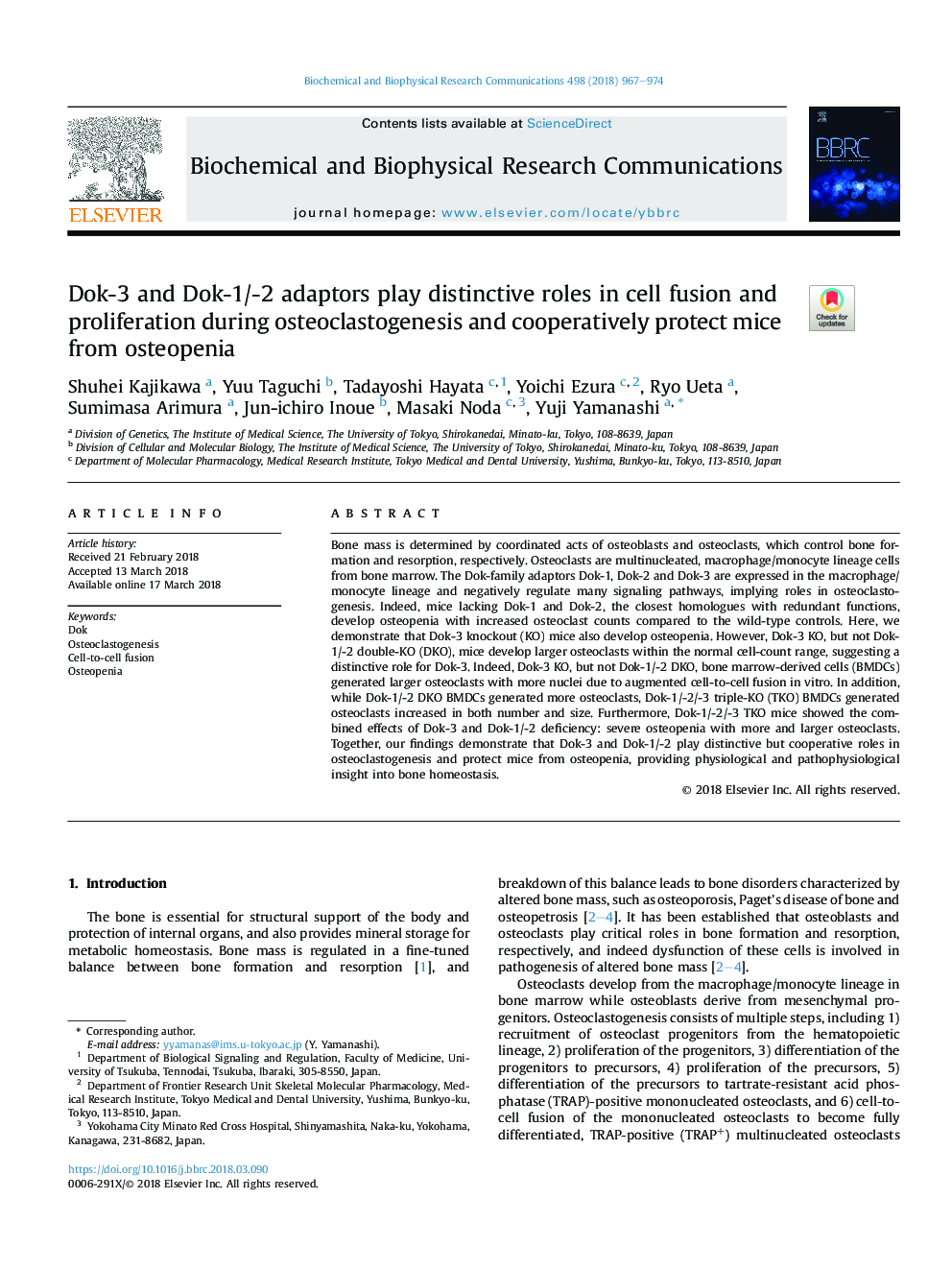| Article ID | Journal | Published Year | Pages | File Type |
|---|---|---|---|---|
| 8293350 | Biochemical and Biophysical Research Communications | 2018 | 8 Pages |
Abstract
Bone mass is determined by coordinated acts of osteoblasts and osteoclasts, which control bone formation and resorption, respectively. Osteoclasts are multinucleated, macrophage/monocyte lineage cells from bone marrow. The Dok-family adaptors Dok-1, Dok-2 and Dok-3 are expressed in the macrophage/monocyte lineage and negatively regulate many signaling pathways, implying roles in osteoclastogenesis. Indeed, mice lacking Dok-1 and Dok-2, the closest homologues with redundant functions, develop osteopenia with increased osteoclast counts compared to the wild-type controls. Here, we demonstrate that Dok-3 knockout (KO) mice also develop osteopenia. However, Dok-3 KO, but not Dok-1/-2 double-KO (DKO), mice develop larger osteoclasts within the normal cell-count range, suggesting a distinctive role for Dok-3. Indeed, Dok-3 KO, but not Dok-1/-2 DKO, bone marrow-derived cells (BMDCs) generated larger osteoclasts with more nuclei due to augmented cell-to-cell fusion in vitro. In addition, while Dok-1/-2 DKO BMDCs generated more osteoclasts, Dok-1/-2/-3 triple-KO (TKO) BMDCs generated osteoclasts increased in both number and size. Furthermore, Dok-1/-2/-3 TKO mice showed the combined effects of Dok-3 and Dok-1/-2 deficiency: severe osteopenia with more and larger osteoclasts. Together, our findings demonstrate that Dok-3 and Dok-1/-2 play distinctive but cooperative roles in osteoclastogenesis and protect mice from osteopenia, providing physiological and pathophysiological insight into bone homeostasis.
Keywords
Related Topics
Life Sciences
Biochemistry, Genetics and Molecular Biology
Biochemistry
Authors
Shuhei Kajikawa, Yuu Taguchi, Tadayoshi Hayata, Yoichi Ezura, Ryo Ueta, Sumimasa Arimura, Jun-ichiro Inoue, Masaki Noda, Yuji Yamanashi,
